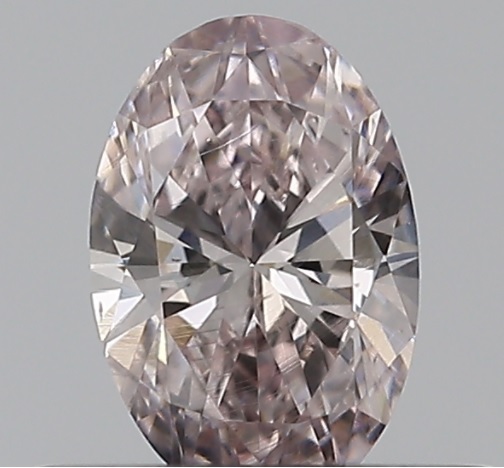Saturation refers to the intensity and purity of colour within a diamond. It is a key factor in determining the overall colour grade of a diamond, alongside hue (the type of colour) and tone (the lightness or darkness of the colour). In diamonds, the more vivid and intense the colour, the higher the saturation level. This characteristic significantly influences the diamond’s value, with higher saturation diamonds generally being more desirable and commanding higher prices.
Understanding Diamond Saturation
Definition of Saturation:
Saturation measures the strength or richness of a diamond’s colour. It indicates how much of the diamond’s colour is concentrated and how pure that colour is, free from any other modifying hues. A highly saturated diamond will have a more intense, pure, and vibrant colour, whereas a diamond with low saturation will appear more faint or washed out, with a less pronounced colour.
Saturation Scale:
In the context of diamond grading, saturation is often assessed on a scale that ranges from faint to vivid or intense, depending on the type of diamond. The grading system for saturation is especially used when grading fancy coloured diamonds, which exhibit noticeable colours beyond the standard white or colourless diamonds. The scale typically includes the following categories:
Faint: Very little colour is present, and the diamond appears mostly colourless.
Light: A faint hint of colour can be seen, but it is still relatively subtle.
Fancy Light: A more noticeable colour, but still not as strong or vibrant as higher categories.
Fancy: A diamond that exhibits a noticeable, good-quality colour with moderate intensity.
Fancy Intense: A deep, saturated colour that appears vivid but may still allow some lightness or tone variations.
Fancy Vivid: The highest level of saturation, where the colour is rich, deep, and incredibly vibrant, creating a visually striking effect.
Impact of Saturation on Diamond Value:
Saturation plays a significant role in determining the value of fancy coloured diamonds. Generally, the greater the saturation, the more valuable the diamond. A diamond with higher saturation will often appear more striking and will usually be priced higher than a similarly graded diamond with lower saturation, assuming all other factors are equal. This is because more intense and vivid colours are rarer and more visually appealing.
For example, a fancy vivid blue diamond would typically be worth significantly more than a fancy light blue diamond, due to the difference in the intensity of colour.
How Saturation Affects the Appearance of Coloured Diamonds:
The saturation of a coloured diamond will directly influence how the diamond appears to the naked eye. For example:
A fancy vivid pink diamond will appear vibrant, rich, and highly saturated, showing a pure pink colour.
A light yellow diamond may have a subtle, pale yellow tint, whereas a vivid yellow diamond will have a much stronger and deeper yellow hue.
Blue diamonds that exhibit high saturation will have a deep, rich blue that catches light and appears strikingly beautiful, while a diamond with lower saturation might show a less intense and more washed-out blue.
Saturation in the Cape Series and Fancy Shaped Diamonds:
Both cape series diamonds (those with a yellow to brown colour range) and fancy shape diamonds (such as diamonds in the shape of emerald, oval, or pear) are graded on a scale of increasing saturation, in addition to other factors like hue and tone.
Cape Series Diamonds: These diamonds have a natural tint of yellow, brown, or orange and are graded for saturation on a scale that measures the intensity of these colours. The more vivid or intense the tint, the higher the saturation, and thus the greater the value.
Fancy Shape Diamonds: For fancy shape diamonds, saturation is also a critical element in grading. Fancy shape diamonds can come in a wide range of colours, and the saturation of these colours can affect the overall appeal of the diamond. A fancy shaped diamond with higher saturation will generally be more desirable, especially if the colour is highly vibrant and deep.
The Role of Saturation in Diamond Cutting:
While colour is often considered a matter of natural characteristics, the cutting of a diamond can also impact its perceived saturation. For example, a well-cut diamond may appear to have greater colour intensity and saturation as light is reflected and refracted more effectively within the diamond. Conversely, poor cutting can cause the diamond to lose some of its colour brilliance, making it appear less saturated.
Saturation and Fancy Coloured Diamonds:
Fancy coloured diamonds come in a wide variety of colours, including blue, green, pink, yellow, orange, red, and brown. The saturation level is particularly important when grading these diamonds. A fancy vivid pink diamond, for example, is one of the most sought-after diamonds due to its rich pink saturation, whereas a fancy light pink may not have the same level of appeal.
Factors Affecting Diamond Saturation:
Several factors can influence a diamond’s saturation, including its crystal structure, the presence of trace elements (such as boron for blue diamonds or nitrogen for yellow diamonds), and the way the diamond has been cut. The level of saturation can vary from diamond to diamond, even within the same colour family, and plays a crucial role in determining the rarity and value of the diamond.
Diamond saturation is a critical aspect of the diamond’s colour grading, determining the intensity and purity of its hue. The more intense and vivid the colour, the higher the saturation and, consequently, the value of the diamond. In fancy coloured diamonds, saturation is especially important, with diamonds in the fancy vivid and fancy intense categories being among the most highly sought after. Understanding the role of saturation allows diamond buyers to appreciate the depth and richness of coloured diamonds and choose the ones that best suit their personal preferences and value expectations.
